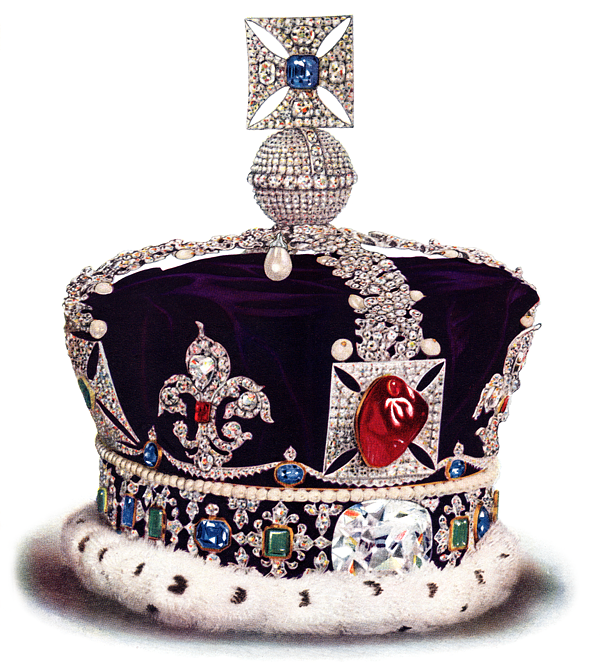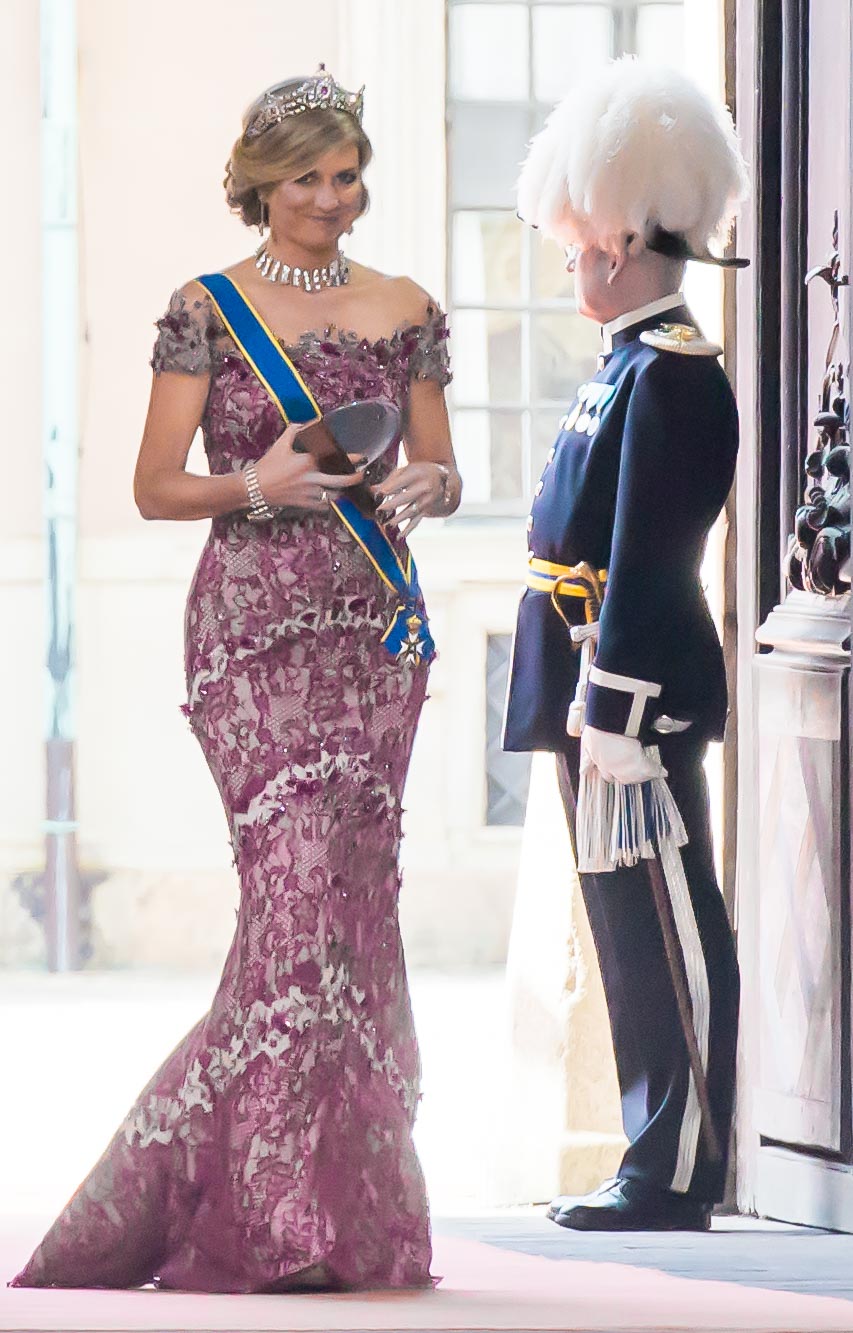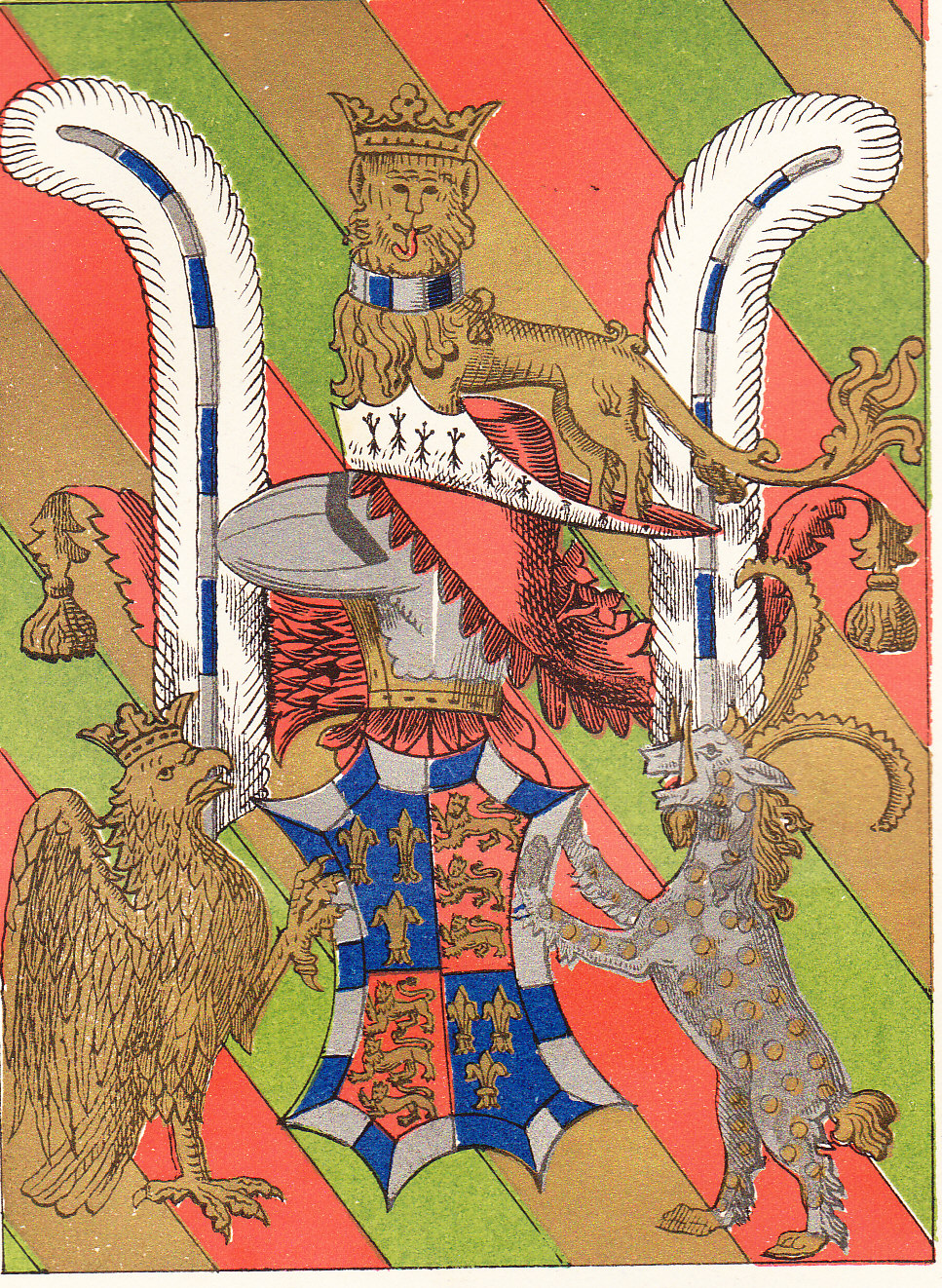|
Circlet (heraldry)
A circlet is a piece of headwear that is similar to a diadem or a Corolla (headgear), corolla. The word 'circlet' is also used to refer to the base of a Crown (headgear), crown or a coronet, with or without a Cap (crown), cap. Diadem and circlet are often used interchangeably, and 'open crowns' with no arches (as opposed to 'closed crowns') have also been referred to as circlets. In greek language, Greek this is known as ''stephanos'', and in Latin as ''corona aperta'', although ''stephanos'' is associated more with laurel wreaths and the crown of thorns said to have been placed on the head of Jesus. Heraldic circlet In Blazon, heraldry, a circlet of an order of knighthood may be placed around the Escutcheon (heraldry), shield of the Armiger, bearer to signify membership of a particular Order (distinction), order. In British heraldry, this pertains to the Orders, decorations, and medals of the United Kingdom, grades of Commander (order), Commander and above (i.e. Knight, Knight Com ... [...More Info...] [...Related Items...] OR: [Wikipedia] [Google] [Baidu] |
Diadem
A diadem is a type of crown, specifically an ornamental headband worn by monarchs and others as a badge of royalty. Overview The word derives from the Greek διάδημα ''diádēma'', "band" or "fillet", from διαδέω ''diadéō'', "I bind round", or "I fasten". The term originally referred to the embroidered white silk ribbon, ending in a knot and two fringed strips often draped over the shoulders, that surrounded the head of the king to denote his authority. Such ribbons were also used to crown victorious athletes in important sports games in antiquity. It was later applied to a metal crown, generally in a circular or "fillet" shape. For example, the crown worn by Queen Juliana of the Netherlands was a diadem, as was that of a baron later (in some countries surmounted by three globes). The ancient Celts were believed to have used a thin, semioval gold plate called a ''mind'' (Old Irish) as a diadem. Some of the earliest examples of these types of crowns can be found in ... [...More Info...] [...Related Items...] OR: [Wikipedia] [Google] [Baidu] |
Escutcheon (heraldry)
In heraldry, an escutcheon () is a shield that forms the main or focal element in an Achievement (heraldry), achievement of arms. The word can be used in two related senses. In the first sense, an escutcheon is the shield upon which a coat of arms is displayed. In the second sense, an escutcheon can itself be a charge (heraldry), charge within a coat of arms. Escutcheon shapes are derived from actual shields that were used by knights in combat, and thus are varied and developed by region and by era. Since shields have been regarded as military equipment appropriate for men only, British ladies customarily bear their arms upon a Lozenge (heraldry), lozenge, or diamond-shape, while clergymen and ladies in continental Europe bear their arms upon a Cartouche (design), cartouche, or oval. Other shapes are also in use, such as the roundel (heraldry), roundel commonly used for arms granted to Aboriginal Canadians by the Canadian Heraldic Authority, or the Nguni shield used in Coats of ar ... [...More Info...] [...Related Items...] OR: [Wikipedia] [Google] [Baidu] |
Monarchy
A monarchy is a form of government in which a person, the monarch, is head of state for life or until abdication. The political legitimacy and authority of the monarch may vary from restricted and largely symbolic (constitutional monarchy), to fully autocratic (absolute monarchy), and can expand across the domains of the executive, legislative, and judicial. The succession of monarchs in many cases has been hereditical, often building dynastic periods. However, elective and self-proclaimed monarchies have also happened. Aristocrats, though not inherent to monarchies, often serve as the pool of persons to draw the monarch from and fill the constituting institutions (e.g. diet and court), giving many monarchies oligarchic elements. Monarchs can carry various titles such as emperor, empress, king, queen, raja, khan, tsar, sultan, shah, or pharaoh. Monarchies can form federations, personal unions and realms with vassals through personal association with the monarch, whi ... [...More Info...] [...Related Items...] OR: [Wikipedia] [Google] [Baidu] |
Crowns (headgear)
A crown is a traditional form of head adornment, or hat, worn by monarchs as a symbol of their power and dignity. A crown is often, by extension, a symbol of the monarch's government or items endorsed by it. The word itself is used, particularly in Commonwealth countries, as an abstract name for the monarchy itself, as distinct from the individual who inhabits it (that is, ''The Crown''). A specific type of crown (or coronet for lower ranks of peerage) is employed in heraldry under strict rules. Indeed, some monarchies never had a physical crown, just a heraldic representation, as in the constitutional kingdom of Belgium, where no coronation ever took place; the royal installation is done by a solemn oath in parliament, wearing a military uniform: the King is not acknowledged as by divine right, but assumes the only hereditary public office in the service of the law; so he in turn will swear in all members of "his" federal government''. Variations * Costume headgear imitati ... [...More Info...] [...Related Items...] OR: [Wikipedia] [Google] [Baidu] |
Tiara
A tiara (from la, tiara, from grc, τιάρα) is a jeweled head ornament. Its origins date back to ancient Greece and Rome. In the late 18th century, the tiara came into fashion in Europe as a prestigious piece of jewelry to be worn by women at formal occasions. The basic shape of the modern tiara is a (semi-)circle, usually made of silver, gold or platinum, and richly decorated with precious stones, pearls or cameos. Tiaras were extremely popular during the late 19th century and were worn at events where the dress code was white tie. After World War I, wearing a tiara gradually fell out of fashion, except for official occasions at a royal court. Interest in tiaras has increased again since the beginning of the 21st century. The word "tiara" is often used interchangeably with the word "diadem". Description The basic shape of the modern tiara is a (semi-)circle, usually made of silver, gold or platinum. Tiaras have also been made from tortoiseshell, coral and quartz, and in ... [...More Info...] [...Related Items...] OR: [Wikipedia] [Google] [Baidu] |
Achievement (heraldry)
In heraldry, an achievement, armorial achievement or heraldic achievement (historical: hatchment) is a full display or depiction of all the heraldic components to which the bearer of a coat of arms is entitled. An achievement comprises not only the arms displayed on the escutcheon, the central element, but also the following elements surrounding it: * Crest placed atop a: * Torse (or Cap of Maintenance as a special honour) * Mantling * Helm of appropriate variety; if holder of higher rank than a baronet, issuing from a: * Coronet or Crown (not used by baronets), of appropriate variety. * Supporters (if the bearer is entitled to them, generally in modern usage not baronets), which may stand on a Compartment * Motto, if possessed * Order, if possessed * Badge, if possessed Coat of arms Sometimes the term "coat of arms" is used to refer to the full achievement, however this usage is incorrect in the strict sense of heraldic terminology, as a coat of arms refers to a garment ... [...More Info...] [...Related Items...] OR: [Wikipedia] [Google] [Baidu] |
Knight Grand Cross
Grand Cross is the highest class in many orders, and manifested in its insignia. Exceptionally, the highest class may be referred to as Grand Cordon or equivalent. In other cases, there may exist a rank even higher than Grand Cross, e.g. Grand Collar. In rare cases, the insignia itself is referred to as the "grand cross". In international relations, in many times the class of Grand Cross is typically reserved for royalty, heads of state and equivalent. Sometimes a holder of the highest class or grade are referred to as "Commander Grand Cross",) is used in the Swedish Orders of the Sword, Polar Star and Vasa and in the Finnish Orders of the White Rose and Lion., name="Ex-01", group=A "Knight Grand Cross", or just "Grand Cross". In the United Kingdom, the rank of "Knight Grand Cross" or "Dame Grand Cross" allows the recipient to continue to use the honorific "Sir" (male) or "Dame" (female) as a style before his or her name. The knighthood is initially conferred, as in other co ... [...More Info...] [...Related Items...] OR: [Wikipedia] [Google] [Baidu] |
Knight
A knight is a person granted an honorary title of knighthood by a head of state (including the Pope) or representative for service to the monarch, the church or the country, especially in a military capacity. Knighthood finds origins in the Greek ''hippeis'' and '' hoplite'' (ἱππεῖς) and Roman '' eques'' and ''centurion'' of classical antiquity. In the Early Middle Ages in Europe, knighthood was conferred upon mounted warriors. During the High Middle Ages, knighthood was considered a class of lower nobility. By the Late Middle Ages, the rank had become associated with the ideals of chivalry, a code of conduct for the perfect courtly Christian warrior. Often, a knight was a vassal who served as an elite fighter or a bodyguard for a lord, with payment in the form of land holdings. The lords trusted the knights, who were skilled in battle on horseback. Knighthood in the Middle Ages was closely linked with horsemanship (and especially the joust) from its origins in th ... [...More Info...] [...Related Items...] OR: [Wikipedia] [Google] [Baidu] |
Commander (order)
Commander ( it, Commendatore; french: Commandeur; german: Komtur; es, Comendador; pt, Comendador), or Knight Commander, is a title of honor prevalent in chivalric orders and fraternal orders. The title of Commander occurred in the medieval military orders, such as the Knights Hospitaller, for a member senior to a Knight. Variations include Knight Commander, notably in English, sometimes used to denote an even higher rank than Commander. In some orders of chivalry, Commander ranks above (i.e. Officer), but below one or more ranks with a prefix meaning 'Great', e.g. in French, in German, (using an equivalent suffix) in Spanish, in Italian, and in Dutch (, 'Grand Commander'), Grand Cross. France History The rank of in the French orders comes from the Middle Ages military orders, in which low-level administrative houses were called and were governed by . In the Modern Age, the French Kings created chivalric orders which mimicked the military order's ranks. * The Order of ... [...More Info...] [...Related Items...] OR: [Wikipedia] [Google] [Baidu] |
Orders, Decorations, And Medals Of The United Kingdom
In the United Kingdom and the British Overseas Territories, personal bravery, achievement, or service are rewarded with honours. The honours system consists of three types of award: *Honours are used to recognise merit in terms of achievement and service; *Decorations tend to be used to recognise specific deeds; *Medals are used to recognise service on a particular operation or in a specific theatre, long or valuable service, and good conduct. Appointments to the various orders and awards of other honours are usually published in ''The London Gazette''. Brief history Although the Anglo-Saxon monarchs are known to have rewarded their loyal subjects with rings and other symbols of favour, it was the Normans who introduced knighthoods as part of their feudal government. The first English order of chivalry, the Order of the Garter, was created in 1348 by Edward III. Since then, the system has evolved to address the changing need to recognise other forms of service to the Unit ... [...More Info...] [...Related Items...] OR: [Wikipedia] [Google] [Baidu] |
British Heraldry
Heraldry is a discipline relating to the design, display and study of armorial bearings (known as armory), as well as related disciplines, such as vexillology, together with the study of ceremony, rank and pedigree. Armory, the best-known branch of heraldry, concerns the design and transmission of the heraldic achievement. The achievement, or armorial bearings usually includes a coat of arms on a shield, helmet and crest, together with any accompanying devices, such as supporters, badges, heraldic banners and mottoes. Although the use of various devices to signify individuals and groups goes back to antiquity, both the form and use of such devices varied widely, as the concept of regular, hereditary designs, constituting the distinguishing feature of heraldry, did not develop until the High Middle Ages. It is often claimed that the use of helmets with face guards during this period made it difficult to recognize one's commanders in the field when large armies gathered together ... [...More Info...] [...Related Items...] OR: [Wikipedia] [Google] [Baidu] |
Order (distinction)
An order is a visible honour awarded by a sovereign state, monarch, dynastic house or organisation to a person, typically in recognition of individual merit, that often comes with distinctive insignia such as collars, medals, badges, and sashes worn by recipients. Modern honour systems of state orders and dynastic orders emerged from the culture of orders of chivalry of the Middle Ages, which in turn emerged from the Catholic religious orders. Terminology The word order ( la, ordo), in the case referred to in this article, can be traced back to the chivalric orders, including the military orders, which in turn trace the name of their organisation back to that of the Catholic religious orders. Orders began to be created ''ad hoc'' and in a more courtly nature. Some were merely honorary and gradually the ''badges'' of these orders (i.e. the association) began to be known informally as ''orders''. As a result, the modern distinction between ''orders'' and ''decorations'' or ''in ... [...More Info...] [...Related Items...] OR: [Wikipedia] [Google] [Baidu] |








